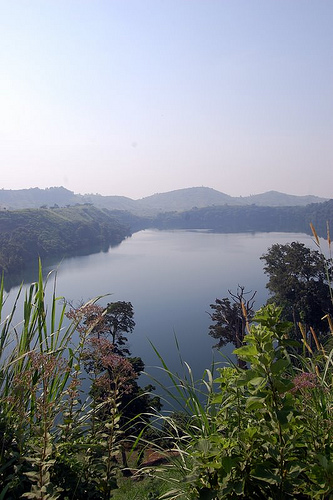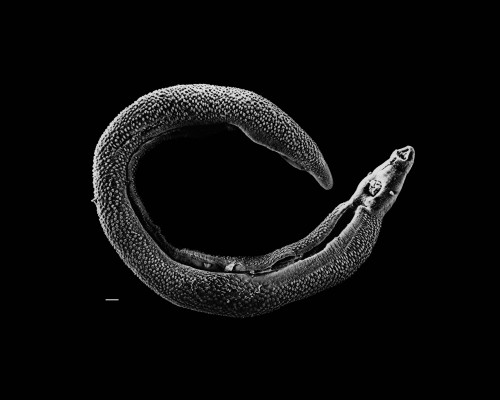In August 2012, 10 Israelis took a quick dip in a mountain lake in western Uganda. The lake, called Nyinambuga, sits in an ancient volcanic crater. The blue-green water of Lake Nyinambuga no doubt looked enticing, but it was rife with blood flukes, parasitic flatworms that burrow through the skin, invade the blood vessels, and feed on red blood cells.
Three months later one of the boys in the group ended up in the office of Dr. Eli Schwartz, a physician who specializes in infectious diseases and travel medicine at Sheba Medical Center in Tel-Hashomer, Israel. Since his return from Africa, he had been coughing. He had suffered headaches and intermittent fevers. The boy’s lab work and recent African adventure led Schwartz to suspect schistosomiasis, a blood fluke infection. The US Centers for Disease Control and Prevention confirmed it.
Schwartz had seen this sort of thing before. “For us, who deal with travel medicine, this is a common scenario,” he said at the American Society of Tropical Medicine and Hygiene meeting in November. (He has also seen worse — things like this, for instance). But what did surprise him was how infectious the parasite seemed to be. With the help of his patient, Schwartz tracked down the other Israelis who had been on the tour, nineteen in all. Of those, only 10 had gone in the water. All contracted the disease despite spending, on average, just 22 minutes in the water. A previous report from Cape Maclear, an especially fluke-infested area of Malawi, suggested that people would have to spend 10 days engaged in high-risk activities like diving and swimming to see such high rates of infection.
 Something else didn’t seem quite right. When Schwartz delved into the literature, he found few reports of blood flukes at high altitudes. Lake Nyinambuga is just one of a string of high-altitude crater lakes in Western Uganda. One study conducted in the late 90s in the region found no transmission of blood flukes above 1400 meters. A 2008 article, however, shows that school children living around these lakes had contracted the disease.
Something else didn’t seem quite right. When Schwartz delved into the literature, he found few reports of blood flukes at high altitudes. Lake Nyinambuga is just one of a string of high-altitude crater lakes in Western Uganda. One study conducted in the late 90s in the region found no transmission of blood flukes above 1400 meters. A 2008 article, however, shows that school children living around these lakes had contracted the disease.
Schwartz wanted to find some explanation for this discrepancy. And after some research, he seemed to have identified culprit: tilapia. These fish were introduced into the crater lakes as an additional source of protein in the 1940s.
To understand the relationship, you have to know a little bit more about the life cycle of the parasite. Blood flukes spend part of their life in snails. And tilapia apparently find these snails quite tasty. “Whenever you have a lot of fish in the lakes, you don’t have the snail. Therefore you break the chain of schisto infection,” Schwartz said.
Schwartz posits the insecticide-treated bed nets that health workers have been handing out for free to fight malaria are instead being used for fishing. And not just fishing, overfishing. “What has happened has nothing to do with high altitude. It has more to do with this kind of ecological change and the extinction of fish from this area,” Schwartz said.
It’s an elegant explanation. But exactly how much evidence Schwartz has to support this hypothesis is unclear. I couldn’t find any data on tilapia populations in Lake Nyinambuga, and I found only limited data on the snail-eating habits of tilapia. With respect to the nets, fisherman have been found using bed nets to dry fish in Kenya. And there is at least anecdotal evidence that fishermen use them to fish in Cameroon. But those reports may be overblown. As with all ecology, the true explanation is likely to be even messier and more complex than we can imagine.
***
Image credits:
Blood fluke image courtesy of David Williams, Illinois State University
Photo of Lake Nyinambuga by Egui_ on Flickr
You can find Eli Schwartz’s write-up of this here.

This is a part 1 of a multi-part series? I hope. And I again protest about the deletion of the comments section. One of my favorite parts.